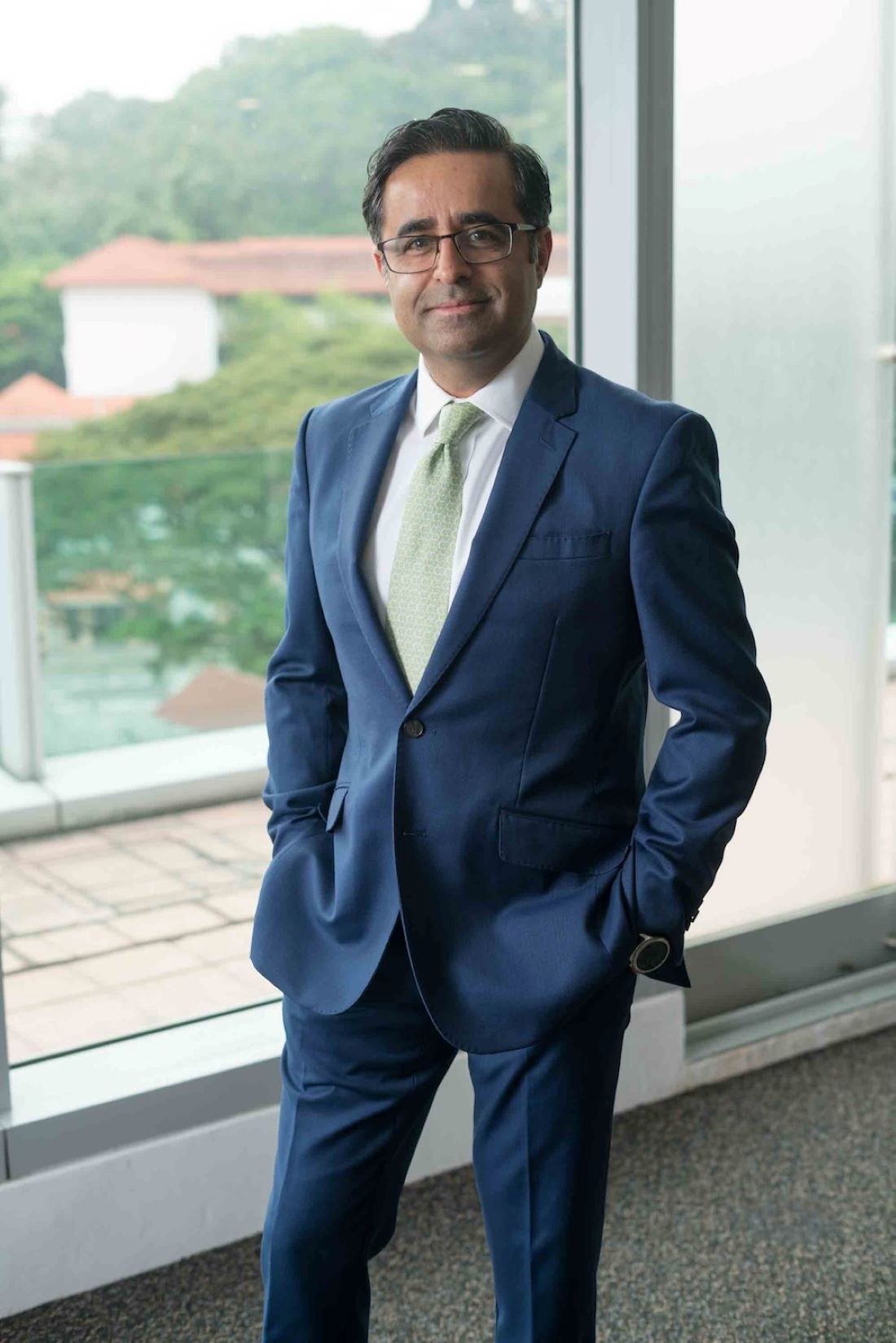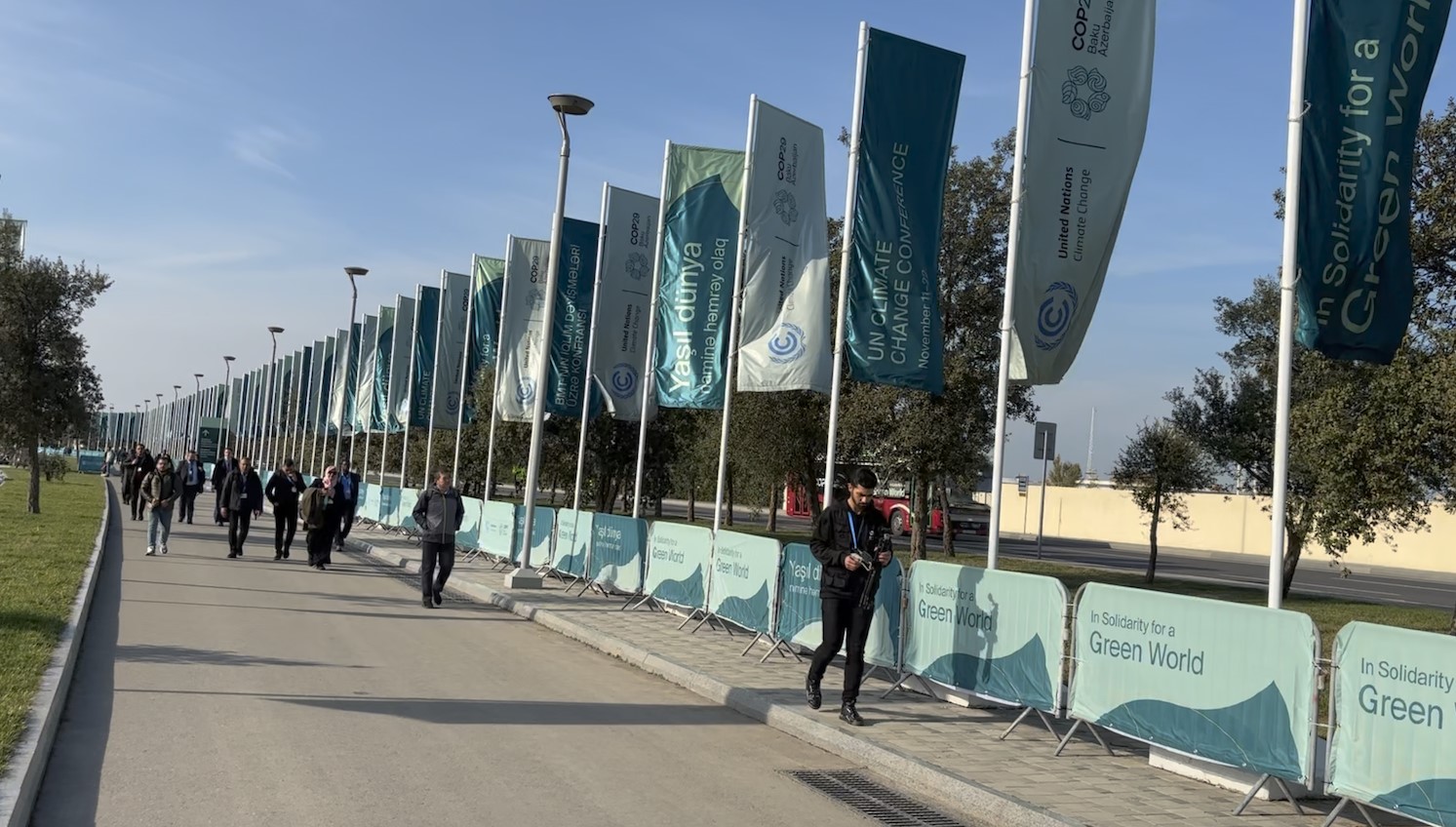This year’s annual United Nations climate summit, COP 29, is the first COP meeting to focus on finance in 15 years, and among the major agenda items delegates have been discussing are financial commitments by wealthier countries to help developing nations transition their energy infrastructure away from coal and other high-emissions sources and toward more renewable forms of energy.
Paying for big power projects today often involves a combination of public and private capital, bringing more sources of funding as well as greater complexity. No one knows the business of funding these critical pieces of infrastructure like Nomi Ahmad, CEO of GE Vernova’s Financial Services business, which has generated some $25 billion in capital for renewables and serves customers globally.
Over the three decades he’s spent in the energy finance industry, Ahmad says he has witnessed solar and wind power plummet in cost, while breakthrough climate solutions such as capturing and storing carbon emissions have recently found their way to the marketplace. The need for capital to fund big energy projects — from renewables to gas turbines to electrical transmission to nuclear power — hasn’t changed, he says, but the sources have, as ever more sources of funding become available. But the projects themselves still must be commercially viable.
Perspectives chatted with Ahmad about what this year’s COP summit means for the energy transition and how innovations in financing have contributed to more abundant capital for renewable energy projects and more willingness to shoulder risk by the private sector.
PERSPECTIVES: The agenda for COP 29 focuses on financing the energy transition and on a commitment by the world’s wealthier nations to pay for developing nations to retire sources of greenhouse gas emissions. How will the results of these negotiations impact the energy industry?
AHMAD: The Western world is looking at the developing world and saying, “We must find a way to help you finance the shutdown of coal assets.” As our pathway to net zero becomes more urgent, we need to find a way to pay for the infrastructure of yesteryear. What people are optimistic about and hoping for is that there will be alignment and commitments, and that those will trickle down into actionable policies, which will allow us to take off the coal and add new renewables. I think that’s why people care.

The United Nations has warned that limiting climate change to 1.5 degrees above pre-industrial temperatures will require trillions of dollars in investment. What reasons do you have to be optimistic, and what concerns you?
I don’t think that anyone is asking what we need to do. It has really become an issue of how to do it. And when. There’s plenty of institutional capital which is ready to put down equity in renewable and energy transition projects. Policy and regulation plays such an important role, too. These are tailwinds. Even consumer behavior is changing in favor of sustainability.
The headwinds are that we’ve just gone through an election year in the U.S. One obvious question is what that means with regard to geopolitical tensions and protectionism that could prevent either flow of capital or flow of equipment. In the countries where there is renewable potential, is there a regulatory and legal environment, political and fiscal stability to allow these projects to be developed by the private sector or the public sector?
I have a lot to be optimistic about working for a company like GE Vernova, because we’re actually positioned to work globally pretty much across the value chain of what will enable the energy transition, and all of these things will require large amounts of capital — nearly $80 trillion by some estimates.
How does financing energy infrastructure differ between developed and developing countries?
There are differences. For example, in the financing of a wind project in Italy, you have your permits and approvals, but your contractual counterparties who buy the power may be private-sector entities. It could be a retail distribution company. It could be a large corporation, such as a tech company who agrees to buy the power, or perhaps you’re selling into the merchant market. Investors will look at the commercial viability, how the plant makes money and who’s standing behind the credit, but things like non-payment, a change in government, expropriation, or not honoring contracts aren’t perceived as issues.
In a developing country, you may have entered into a set of really good contracts. Assume that there is a framework that allows those to be negotiated and they’re bankable contracts. You still want multilateral entities such as development finance institutions (DFIs) and multilaterals to be there covering you from some kinds of risk, such as contract frustration, lack of foreign exchange, or, in some cases, war, civil disturbance, confiscation, expropriation, or nationalization. When you operate in a country which desperately needs the power but may not have the political system or the regulatory system or the financial system stable enough for you to service that capital and honor the contract for 25 or 30 years, then you typically work with multilaterals. A state-owned utility or a finance ministry would think twice before they upset their relationships with the World Bank Group, as an example.
Is there a particular project you would point to that illustrates the real-world impact of COP finance targets?
In Türkiye, for example, one of the issues facing the country is that Turkish steelmakers and other industrial producers are subject to EU carbon limits on their exports. The country set a goal to double its renewable energy production by 2035 and as part of that committed to commissioning 10 gigawatts (GW) of solar capacity between 2017 and 2027. GE Vernova helped deliver more than a quarter of that solar power by mobilizing export credit finance for those solar projects. GE Vernova’s Financial Services business supported the United Kingdom’s export credit agency on its guarantee for Türkiye’s largest solar project and, on the basis of that, we recently announced the financing of the second-largest solar project with Kalyon Enerji, spanning across several cities.
As the targets and timelines for the energy transition evolve, has energy finance changed as well? Is there innovation in how projects are funded?
When I started my career, we were financing supercritical coal plants with pollution control equipment, and we thought we were doing the greatest favor to mankind by bringing low-cost power. So, yes, a lot has changed since then. Renewable energy has become very competitive due to both the incredible learning curve of capital expenditures as well as the emergence of pools of capital with a very heavy environmental, social, and governance (ESG) focus, which implies a lower cost of financing and more liquidity. There are also now well-capitalized regional and local developers who have the lay of the land, who understand project development and structuring and have built a credible track record. We see a lot more private equity–backed and infrastructure fund–backed platforms beginning to operate in these emerging markets. So the kinds of characters playing in this arena have certainly changed from the pre-Enron era of Western utility and developer operators venturing abroad.
We’re also seeing incredible technology innovation. It is the push on efficiency and reducing cost. It could be long-duration energy storage. It could be different ways to produce hydrogen. We are seeing a renaissance of nuclear. You’ve got a lot of capital that just wants to focus on commercializing the new technologies. They require a much higher return because they’re taking a bigger risk. While most of these projects go to the developed world, the applications of them are also in the developing world.
On the financing side, our bread and butter continues to be working with our export credit agency (ECA) partners. We have a very wide network, because we’ve got such an international manufacturing base, and we have developed many partnerships. I’m proud to say that we are at the cutting edge of innovation to make sure that we’re serving our customers on the best terms.
What trend or technology do you think has the potential to surprise the energy industry in the years ahead?
I think that we will see a lot of innovation and investment in the grid space. For example, our ability to move electrons efficiently over long distances. High-voltage direct current (HVDC) cables have been underestimated in their impact in connecting generation and stabilizing the grid. In the past, it would have been far-fetched to connect the U.K. to Morocco, but it’s in the works right now with the ambitious project called Xlinks, which will transmit 3.6 GW of baseload renewable power (enabled by wind, solar, and storage) over a 4,000-kilometer subsea HVDC cable from Morocco to the U.K. More projects like these will shake up the industry and help provide reliable, accessible, and affordable power to many parts of the world.
Forward-Looking Statements
This article contains forward-looking statements, which provide current expectations based on certain assumptions. Except as required by law, we disclaim any obligation to update these statements.
